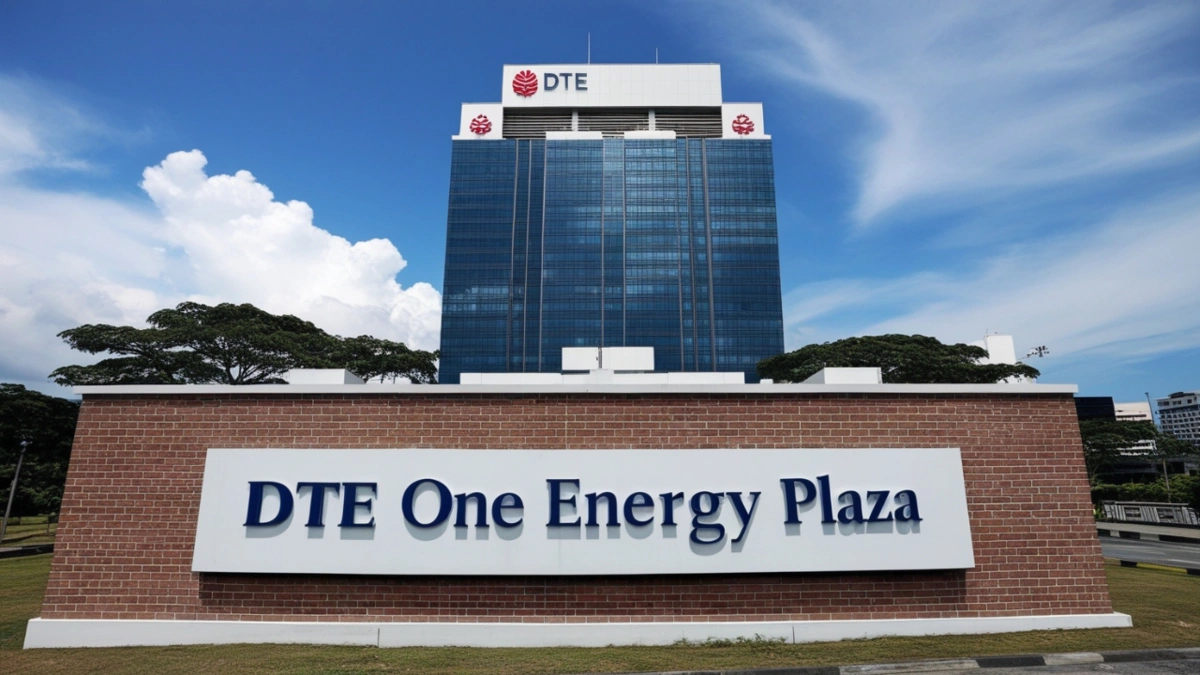DTE Energy’s $217.4 Million Electric Rate Hike: Starting February 6, Michigan residents will see higher electric bills as DTE Energy begins implementing a $217.4 million rate increase, approved by the Michigan Public Service Commission (MPSC). This rate hike will be the second in just over a year, continuing a trend of rising costs for consumers. For typical residential customers using 500 kWh of electricity per month, the rate increase will add approximately $4.61, or a 4.65% increase, to their monthly bills.
The Purpose Behind the Rate Increase
The primary goal of the rate increase is to provide DTE Energy with additional revenue to fund necessary improvements to its infrastructure. Specifically, the company plans to upgrade aging power lines, increase maintenance activities, and enhance reliability, particularly in Detroit and its nearby suburbs. These areas, some of which have some of the oldest power lines in the grid, are expected to benefit from more frequent tree trimming and other reliability measures.
The MPSC acknowledged that these upgrades were needed but expressed concerns about the overall effectiveness of DTE’s spending proposals. MPSC members noted that while DTE’s application justified expenditures related to tree trimming, pole maintenance, and infrastructure, it did not fully demonstrate the customer benefits of the new pilot programs funded by the rate hike. They emphasized the need for more transparency and better data integration in planning, particularly in relation to vulnerable communities and grid reliability.
Despite these reservations, the commission approved the increase, with Chair Dan Scripps pointing out that the additional revenue would help DTE reduce power outages and improve the utility’s service quality.
Key Components of the Rate Increase
The approved rate hike includes several key investments designed to improve the grid’s performance and assist vulnerable customers:
- Tree Trimming and Vegetation Management: DTE will see an additional $87 million allocated for more frequent tree trimming and vegetation management around power lines. This measure aims to reduce outages caused by falling trees and branches, a recurring issue, especially in storm-prone areas.
- Breaker Replacement and Infrastructure Upgrades: The rate hike will also fund the replacement of outdated breakers, expanding and adding substations, and rebuilding miles of cable to enhance the overall reliability of the electrical grid.
- Low-Income Assistance: The increase will help fund a $10 per month rise in the utility’s low-income assistance program, providing more help to households that qualify. The new credit will be $50 per month for customers at or below 150% of the federal poverty level.
- Electric Vehicle Infrastructure: DTE will also invest in electric vehicle (EV) infrastructure, with $12.5 million in capital expenses for its Charging Forward program in 2024 and an additional $5.1 million in 2025. This initiative aims to support the growing demand for EV charging stations throughout the state.
- Portable Generator Program: Another significant portion of the increase will fund DTE’s portable generator program. This program provides backup generators to the most vulnerable customers during widespread outages, ensuring that critical needs like refrigeration and medical devices are powered during emergencies.
Balancing the Costs for Customers
While the rate hike will bring in additional revenue, DTE Energy has attempted to mitigate the impact on its customers by reducing its Power Supply Cost Recovery (PSCR) charge. In November 2024, DTE reduced the PSCR by $300 million, which lowered monthly bills by about $5 for residential customers. The utility has stated that the combination of this reduction and the new rate increase means that customers should not see an overall increase in their energy costs.
Despite this, consumer advocates have expressed concerns about the ongoing pattern of rate hikes. Amy Bandyk, executive director of the Citizens Utility Board of Michigan, argued that the MPSC’s approval did not go far enough in addressing DTE’s service reliability issues. According to Bandyk, the commission should have pushed DTE to focus more on improving the quality of service rather than merely increasing investment in infrastructure without clear customer benefits.
Ongoing Reliability Concerns
DTE has faced significant criticism over its reliability record, particularly regarding the duration and frequency of power outages. The utility was criticized for lengthy outages following winter and summer storms, leading to public outcry. A third-party audit in September 2024 revealed that DTE’s reliability measures were worse than average compared to other utilities, ranking poorly in key areas such as restoration times and frequency of outages.
In response to these concerns, the MPSC has emphasized the importance of DTE improving its performance. Commissioner Alessandra Carreon stated that while DTE has made strides in upgrading infrastructure in vulnerable communities, the utility must do more by integrating demographic and reliability data into its planning process to better serve its customers.
Looking Ahead
As DTE Energy works to implement the approved rate increase, customers and regulators will closely monitor the utility’s performance. The MPSC has made it clear that while infrastructure investments are necessary, DTE must demonstrate a clear connection between its spending and improvements in service reliability. Moving forward, DTE will need to prove that these increases are translating into fewer and shorter outages, better tree trimming cycles, and a more reliable grid for all customers.
The success or failure of these initiatives could play a significant role in shaping future rate increases, as the MPSC and consumer advocates continue to scrutinize DTE’s performance.



